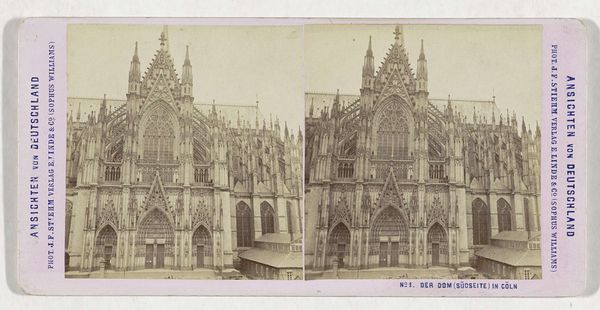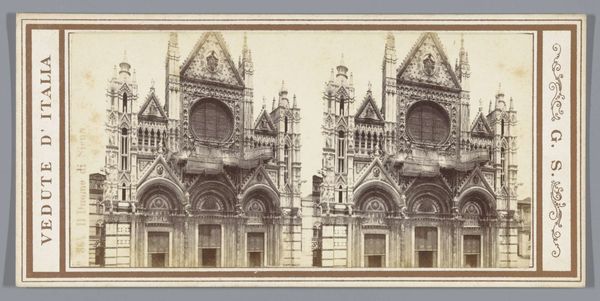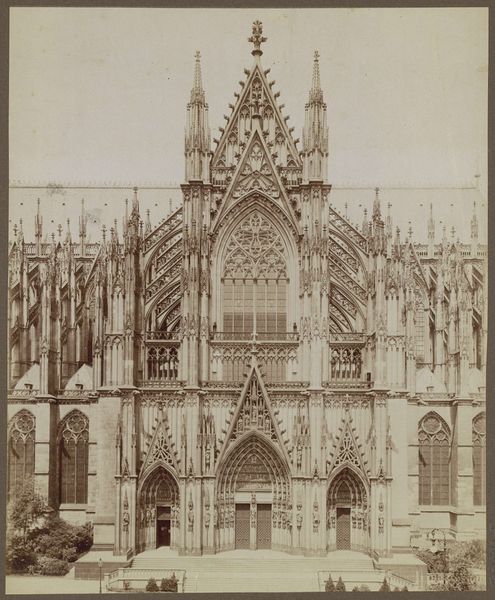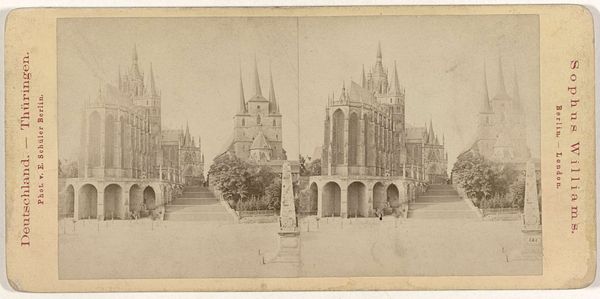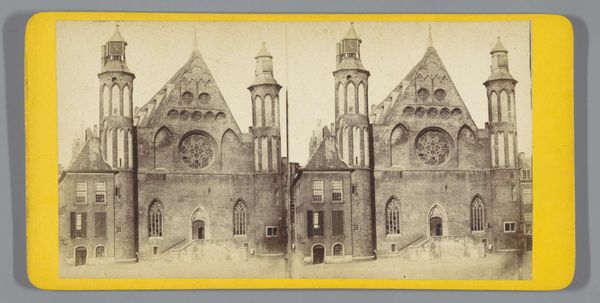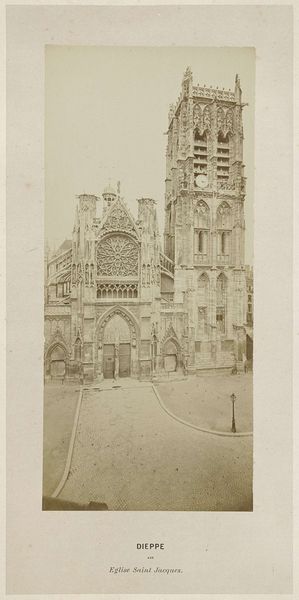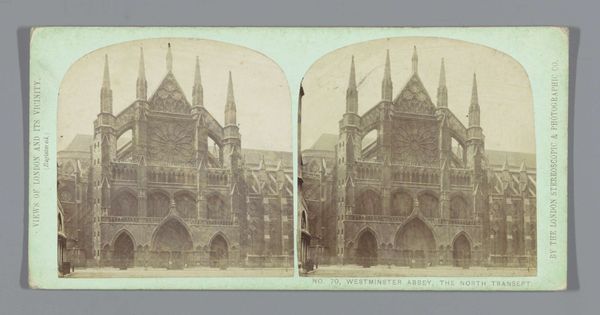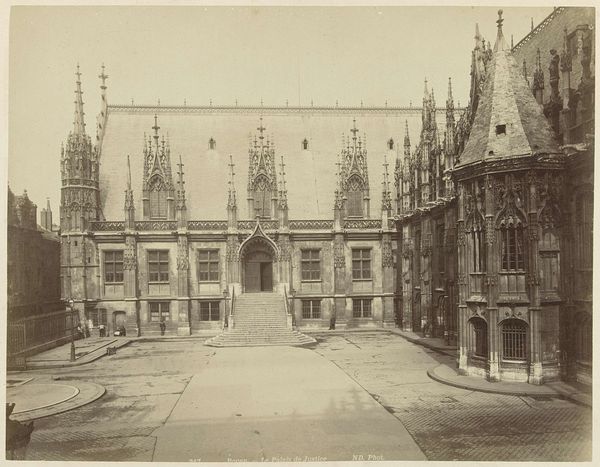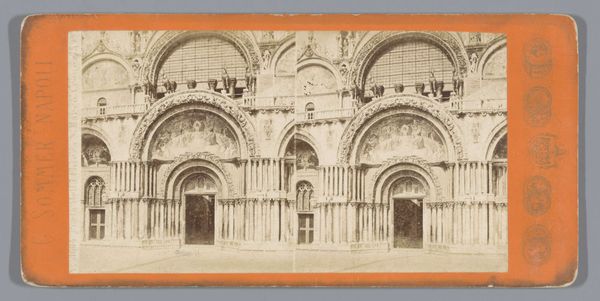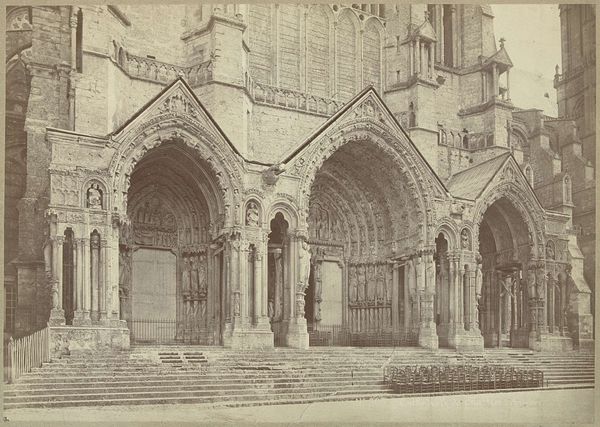
stereo, print, photography
#
stereo
# print
#
landscape
#
photography
#
cityscape
Dimensions: height 87 mm, width 177 mm
Copyright: Rijks Museum: Open Domain
This albumen print, made by Hippolyte Jouvin in the 19th century, depicts the Southern facade of the Cologne Cathedral in Germany. The photographic process itself is central to understanding this image. Albumen printing, popular in the 1800s, involved coating paper with egg white and silver nitrate, creating a light-sensitive surface. When exposed to light through a negative, it produced a detailed image. Jouvin would have used a large format camera with a glass plate negative. The photograph's sepia tone and subtle gradations are a direct result of the materials he used, and the duration of exposure to light. In the mid-19th century, photography emerged as both a scientific marvel and a commercial enterprise. The demand for scenic views and architectural wonders fueled a market for mass-produced images like this one. The print is a tangible reminder of how technological innovation intertwines with artistic vision and popular culture. It prompts us to consider the social context of the image, and how photography democratized access to art and culture during the Victorian era.
Comments
No comments
Be the first to comment and join the conversation on the ultimate creative platform.

